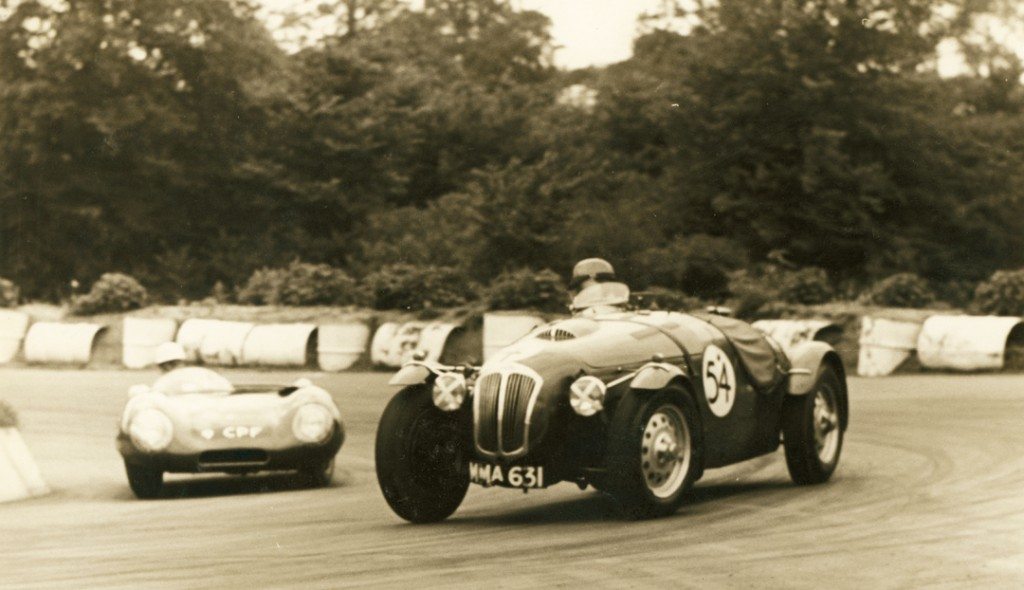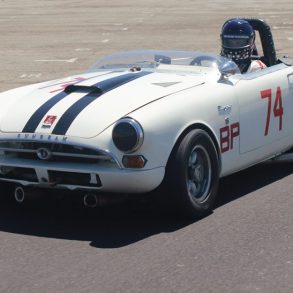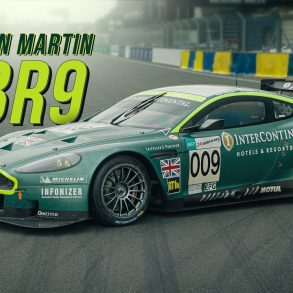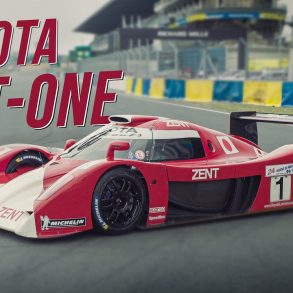
In my racing career I’ve driven many wonderful cars including works Ferraris, Ford GT40s and those sorts of things. However, as magnificent as those cars were, the one that gave me the greatest pleasure to drive, both on and off circuit, was my Le Mans Replica Frazer-Nash. It moved me from my TD MG, which was my first car, into a car that was built specifically for performance and racing. At the same time, it was also a car that could be used on a daily basis for all the normal chores of everyday life. The car was a 21st birthday present from my parents, in 1957. It was very well known in racing circles, as it was the car that Tony Brooks first came to prominence with after he’d moved from his Healey Silverstone.
I purchased the car off of a north-countryman from the West Riding of Yorkshire. Prior to that, I’d seen it compete at many racing meetings, sprints and hill-climbs I’d attended—it was well known. I had really set my heart on the car, hoping it would become available to purchase. From the day it was mine, it became the one and only car I used for both private use and competition for the next 2½ years. It was the car that took me to University. I took girls out in it and raced it at various events in England and on the Continent too. It was the most miraculous car to drive, super, friendly and a totally reliable machine that handled properly—just like a racing car. The Bristol engine was the right sort of power for it and, to use a modern phrase, it ticked every single box for my motoring needs. I don’t think there is any doubt that it was a springboard to my future motor racing career, it taught me so much.
I competed with it against similar cars and sometimes even more powerful machinery. I have to say; I learned all my racing craft from the cockpit of that Frazer-Nash. It was fast enough to be competitive in most of the events I competed. It also gave me the opportunity to hone my skills as a driver against cars of equal power. While racing, I learned where I could gain an advantage, how to brake in the right place, the art of slip-streaming, how to place a car correctly, the right positioning to turn in and out of a corner and generally learning the best racing line to give me the greatest opportunity of finishing as near to the front as possible. I also learned circuit etiquette when more powerful cars were competing in the field travelling up to 40 mph faster than me.
If I were to select a memorable race in the car, it would have to be at Spa, in Belgium, one of my first European events. Indeed, sadly, the very same meeting where poor Archie Scott Brown lost his life in the Lister, in 1958. Of course, being in the Ardennes, it was naturally a wet weekend weather-wise. In those conditions, one needed a car to be as stable as possible, giving the best grip and driveability possible. The car behaved just beautifully, coping with the fast straights and tight corners. I wasn’t as fast as the AC Bristol cars as they were streamlined. The Nash had a full width windscreen and although it could be folded flat, one had to compete within the regulations set by the FIA. Nevertheless, driving on a circuit which was so fast and famous, almost in its original state (although it didn’t go right into the middle of Stavelot) the car was so amenable to anything the circuit offered—it had no vices. At no time did I feel out of control, even though I was reaching top speeds above and beyond what I had achieved on English circuits such as Silverstone or Oulton Park. The race gave me one of the most intense feelings of achievement I’d ever experienced in those early days of my racing career. I have no reservations of nominating my Le Mans Replica Frazer-Nash as my greatest racecar.
As told to Mike Jiggle










